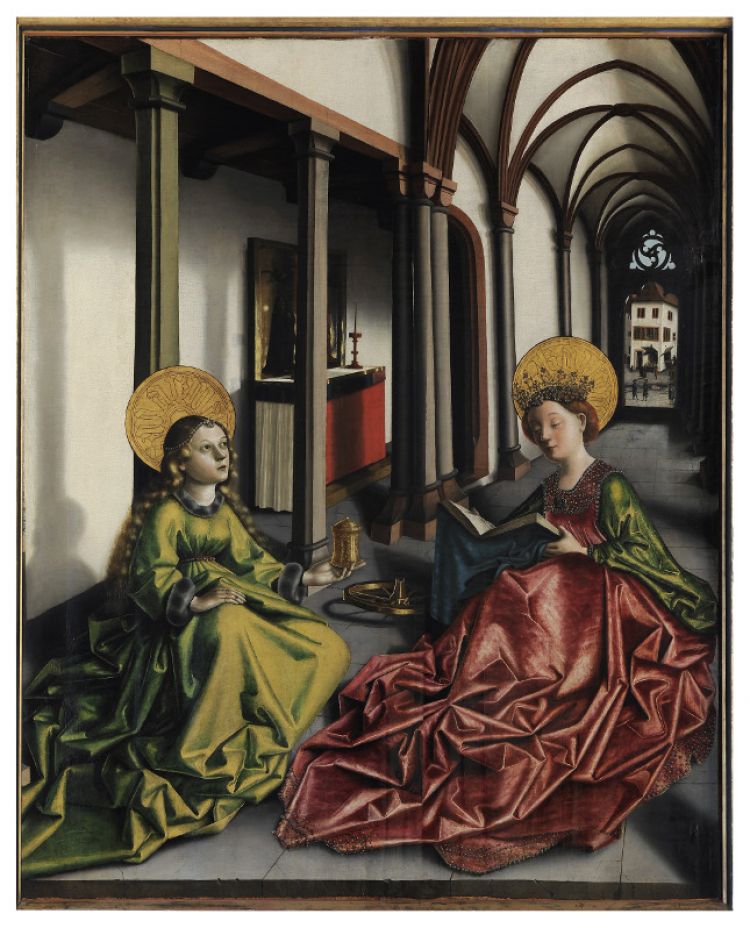St Mary Magdalene and St Catherine

Conrad Witz, a painter who moved to Basle from his native Swabia, is another major figure in 15th-century art north of the Alps. Sometimes described as the most powerful force in German painting before Dürer, he is the first painter from the Upper Rhine whom we recognise as a distinct artistic personality.The panel of St. Mary Magdalene and St. Catherine, no doubt part of a much larger altarpiece, is a work of his maturity. It evinces a new interest in the realistic organisation of space and the rendering of depth and volume.
The two saints are depicted seated in a stone-paved cloister or aisle. To the left is a kind of chapel housing an altar. On it stands a gilt candlestick and an altarpiece depicting the crucified Christ between the Virgin Mary and St. John. The two saints in the foreground are richly attired and their skirts, trimmed with fur and embroidered with gold and pearls, fill the bottom part of the painting. The draperies are animated by an amazing system of star-shaped folds, apparently independent of the women’s physical bodies. Beside St. Catherine lies a wheel, the symbol of her martyrdom, reflecting the light and casting a shadow. On the left, Mary Magdalene holds the vase of perfume for which she is remembered. The names of the two saints are inscribed on their golden haloes.
The picture space is coherently constructed, the perspective confidently drawn. Air seems to circulate around the two figures but, though three-dimensional, they are still somewhat stiff and inexpressive.
Through the open door in the background, we glimpse an artist’s stall – perhaps that of Witz himself – on which are displayed painted panels and polychrome wooden sculptures. Note also the highlights on the puddle and the shadows cast by the figures, which reinforce the illusion of reality.
